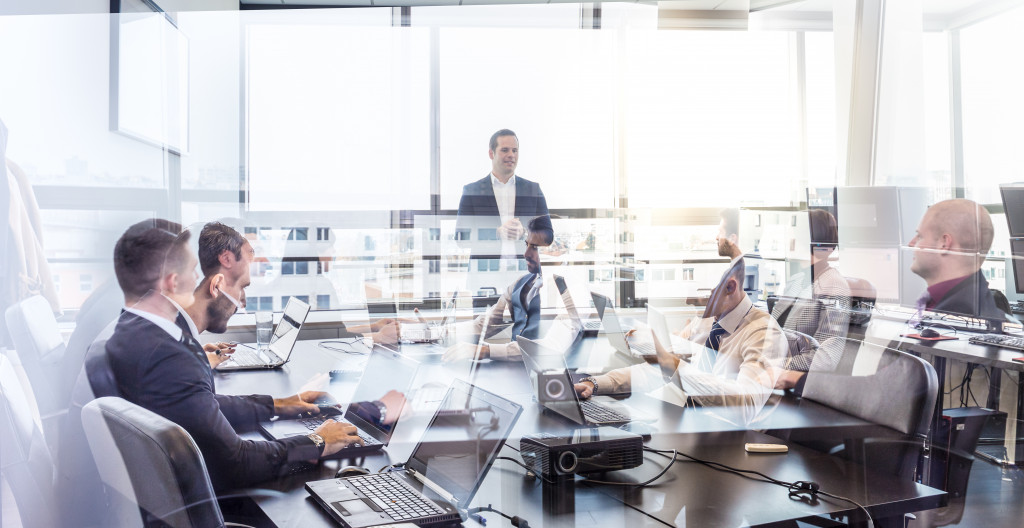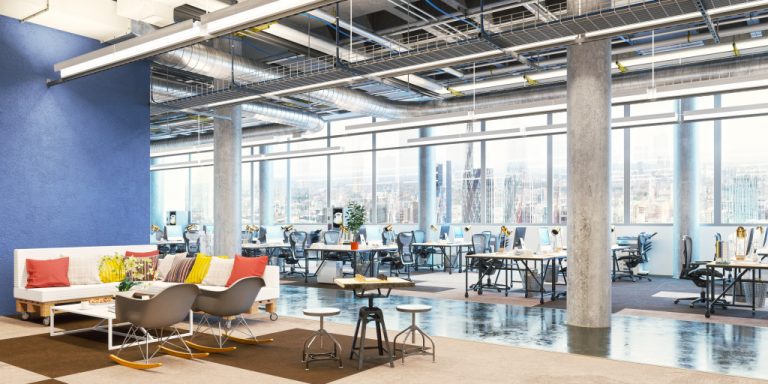A company can only truly thrive if its employees are working in a healthy environment. The ongoing global pandemic has only served to emphasize the importance of workspaces in promoting good mental and physical health and teamwork among employees.
Now that teams have been transitioning back to onsite work from remote setups, companies are responsible for ensuring that the physical office promotes health and productivity. Safety and sanitation are major concerns in this, but something that addresses both of these is office design. That is, how your office is physically built from your floor plan to its aesthetic elements has a large effect on how well employees can work.
What Your Employees Gain from Good Office Design
Well-designed spaces offer more than just visual appeal. There are substantial improvements to employees’ daily experiences because of good office design. Here are five key advantages it offers:
-
Increased Focus and Productivity
A well-designed office supports your employees as they work instead of distracting them. Unfortunately, many offices do not do this effectively.
For instance, dull colors on office walls reinforce a feeling of monotony that makes a space look dull and even makes employees feel lethargic. Avoid this by choosing bright colors that reflect light into the room and energize the people occupying the area. You can also select different wall colors for various rooms that accomplish other purposes.
Texture also makes a space livelier. Faux wall panels are a way to quickly accomplish this effect on office walls without having to do a major renovation. However, an essential consideration for mixing textures with walls is to make sure that they do not clash with the color scheme and theme of your office.
-
Reduced Stress Levels
It is true for every employee, from those in entry-level positions to managers, that work becomes stressful now and then. Stress is not always bad. When experienced in reasonable amounts, stress encourages growth by exercising an individual’s problem-solving skills and critical thinking abilities.
However, in an office setting, employers should not make their physical workspaces a source of stress for employees. But poorly designed and poorly maintained workplaces with outdated technologies makes employees uncomfortable, forcing them to work against inconveniences to finish their tasks for the day.
Have your facilities, such as washrooms, kitchens, and other areas, regularly checked by professionals to avoid issues. Also, make sure that computers, printers, and other devices your employees use have up-to-date software that can manage the complexity and volume of work your team usually does.
-
Better Opportunities for Collaboration

Good office design takes into account the need for both individual and collaborative work areas to accomplish various tasks efficiently. Take a look at your current space. Do employees have spaces to work on their own deliverables? How about meeting rooms to brainstorm ideas together?
Have cubicles or smaller private rooms that allow employees to focus on their own tasks. Then, have open coworking areas large enough for multiple team members to discuss projects with each other. Ensure these meeting rooms are equipped with projectors, whiteboards, and other equipment your team needs to bring ideas together during your brainstorming sessions.
-
Consistent Company Branding
An opportunity that many organizations miss when they decide to forgo pursuing good office design is the chance to reinforce your company’s brand identity in the workplace.
Ask your executives these: do employees feel a disconnect between your brand’s core values and their daily experience at work? Is your office space partially to blame for this?
Additionally, consistent branding in the workplace asserts professionalism when partners and clients pay your workplace a visit. It gives visitors confidence in your competence when your office has a physical appearance consistent with your branding.
-
Maintained Flexibility in the Workplace
Since your employees have already experienced working from home for a long period during this pandemic, they will continue to look for the flexibility they had then. Replicate this by diversifying your work areas.
We do not just mean having spaces for solo and group activities, while these are also vital to the workplace. It means having areas for relaxation, such as common rest areas with amenities such as couches and a pantry. One tip is to have standing desks, too, to promote physical activity.
Good Design Builds a Sense of Community
When your workplace is conducive to productivity, collaboration, and even relaxation, employees are happier and more satisfied with their daily work environment. This encourages creativity, allowing employees to comfortably achieve their goals without poor office conditions hampering their cognitive performance and overall well-being.




